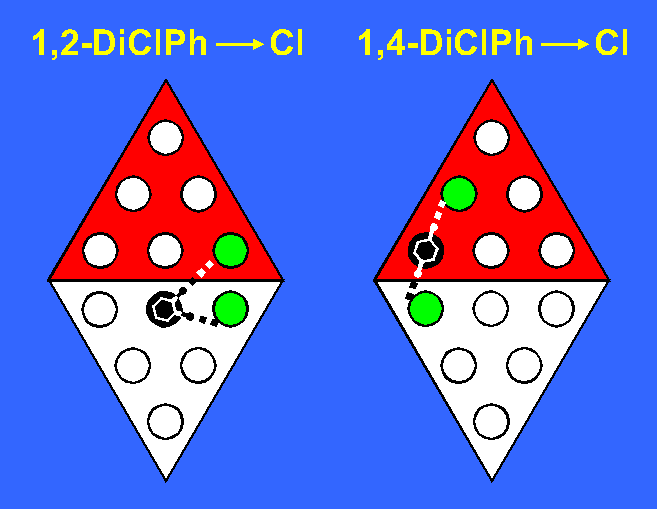Electron- and Photon-Induced Localized Atomic Reaction (LAR)
of Halobenzenes with Si(111) 7x7
Ping-He Lu, John C. Polanyi*, and Duncan Rogers
Department of Chemistry, University of Toronto,
Toronto, Ontario M5S 3H6 Canada
This is an abstract
for a presentation given at the
Eighth
Foresight Conference on Molecular Nanotechnology.
There will be a link from here to the full article when it is
available on the web.
Electron- and photon-induced reaction of chlorobenzene (ClPh) [ref. 1], 1,2-dichlorobenzene (1,2-diClPh) and 1,4-dichlorobenzene (1,4-diClPh) [ref. 2] adsorbed on silicon (Si(111)7x7) has been shown by Scanning Tunneling Microscopy (STM) to result in 'Localized Atomic Reaction' (LAR), imprinting Cl as chemically-bound Cl-Si on the surface. For the ClPh adsorbate, voltage pulses of -4V from the STM tip served to demonstrate LAR restricted to the region of electron impact. Delocalized electron impact, customarily used in this laboratory, imprinted the pattern of 'parent' ClPh(ad) on the surface as 'daughter' Cl-Si. The imprint was found to be on the same area of the unit cell as the parent ClPh(ad), but at an atomic site adjacent to the parent molecule. After photon irradiation of the surfaces covered with a sub-monolayer of adsorbed 1,2-diClPh or 1,4-diClPh, differing Cl-Si nearest-neighbour separations were observed for the differing adsorbates. The most probable separation of neighbouring Cl's in the case of 1,2-diClPh was 8±3 Å, whereas that for 1,4-diClPh was 14±3 Å. These differing separations could be understood if the two C-Cl bonds in the respective adsorbates extended roughly linearly to chlorinate a nearby Si dangling-bond; for 1,2-diClPh the two C-Cl bonds are at 60° to one another leading to the chlorination of closely-neighbouring Si, whereas for 1,4-diClPh they are at approximately 180° leading to chlorination of sites twice as far apart, located to either side of the 1,4-diClPh adsorbate. The parent molecule 1,4-diClPh self-assembles in staggered linear arrays, observable in the (generalized) electron-impact-induced chlorination. With increase in coverage all three adsorbates exhibited a marked preference for an occupancy of three molecules per half-unit cell. The occurrence of LAR is ascribed to a concerted reaction which occurs if the new bond (Cl-Si) is directly adjacent to the old one (Cl-Ph).

References:
- P. H. Lu, J. C. Polanyi, and D. Rogers, J. Chem. Phys. 111, 9905 (1999).
- P. H. Lu, J. C. Polanyi, and D. Rogers, J. Chem. Phys. 112, 11005 (2000).
*Corresponding Address:
John C. Polanyi
Department of Chemistry, University of Toronto
80 St. George Street
Toronto, Ontario M5S 3H6 Canada
Email: [email protected]
Web: http://www.utoronto.ca/jpolanyi
|